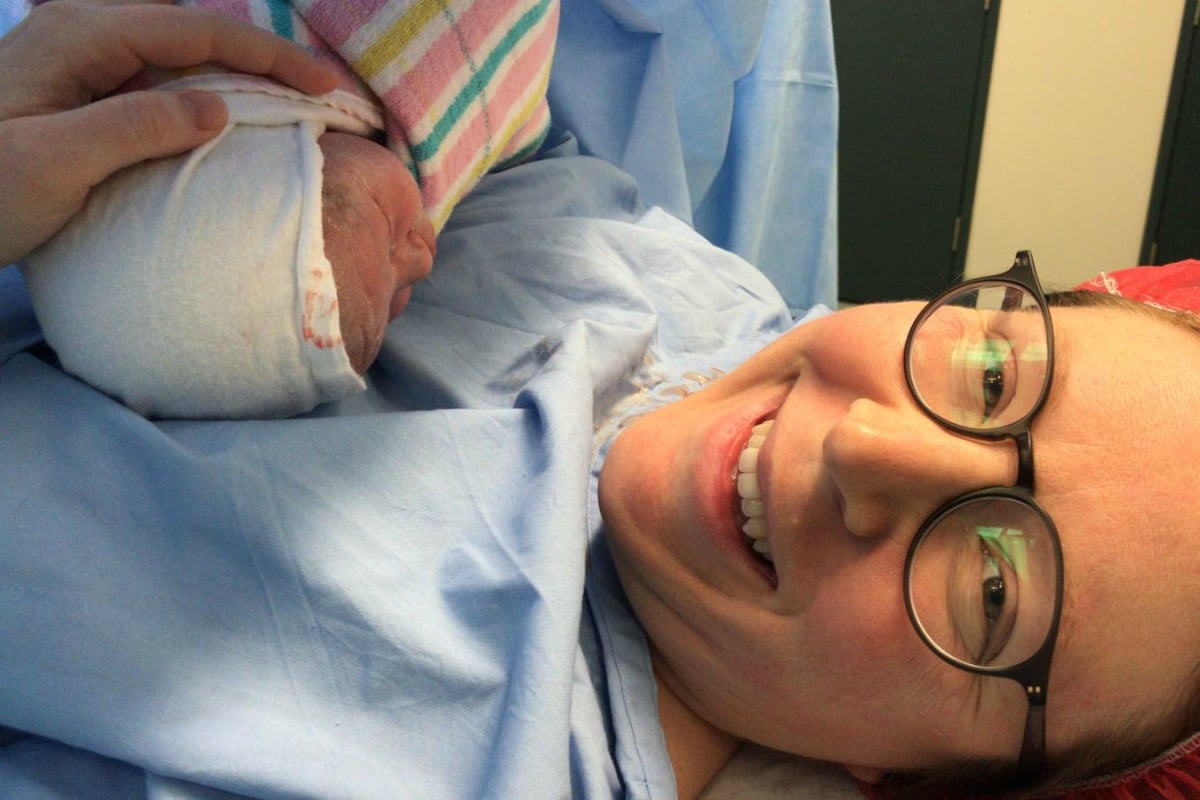
Anna Arstein-Kerslake will never forget her first glimpse of her daughter Freya. She looked down and saw her, halfway out of a small incision in her belly.
“My daughter was there looking at me,” she tells Mamamia. “I don’t even remember looking at my belly. I just saw her.
“I put my hands under her armpits and grabbed her and pulled her. It didn’t hurt, but I could feel the pulling. It sounds scary, but it wasn’t at all.
“I took her on my chest before they even cut the cord. She was crying when she came out, but the second that I put her on my chest she stopped crying and she looked up at me and it was really lovely.”
Mums and non-mums at Mamamia answer questions about childbirth. Post continues after video.
Arstein-Kerslake, who gave birth to Freya two weeks ago in Melbourne, had a maternal-assisted caesarean. It’s something that’s becoming more common in Australia.
For Arstein-Kerslake, it was a very different experience from the birth of her first daughter. That birth, in 2016, in a different state, was also a caesarean.
“That was an emergency caesarean, at 27 weeks, due to bleeding caused by placenta previa [low-lying placenta],” she explains. “I was under general anaesthesia. It was such a strange experience to wake up and my daughter wasn’t in my belly anymore. She had been whisked away to the NICU [neonatal intensive care unit].